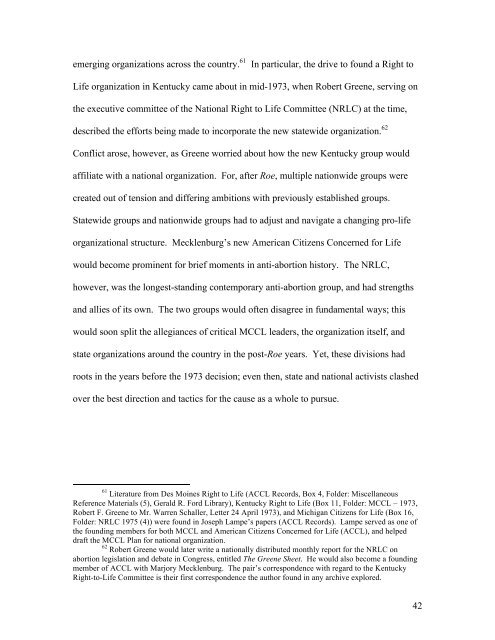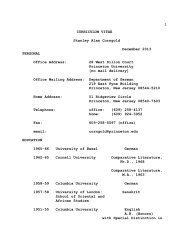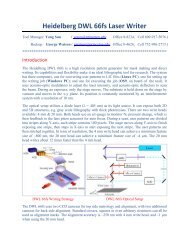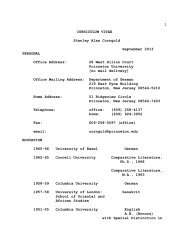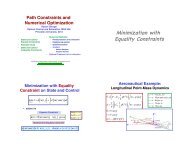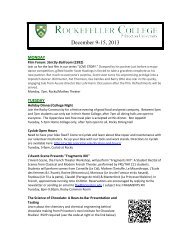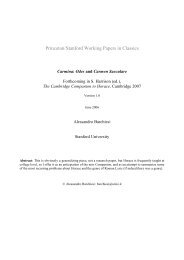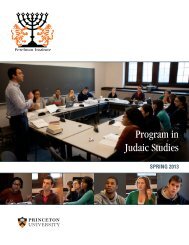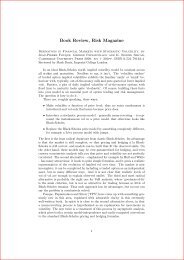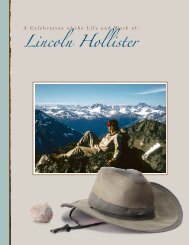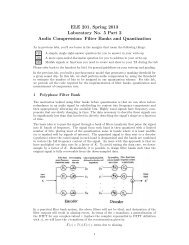The Pre-Roe Pro-Life Movement in Minnesota and New York
The Pre-Roe Pro-Life Movement in Minnesota and New York
The Pre-Roe Pro-Life Movement in Minnesota and New York
Create successful ePaper yourself
Turn your PDF publications into a flip-book with our unique Google optimized e-Paper software.
emerg<strong>in</strong>g organizations across the country. 61<br />
In particular, the drive to found a Right to<br />
<strong>Life</strong> organization <strong>in</strong> Kentucky came about <strong>in</strong> mid-1973, when Robert Greene, serv<strong>in</strong>g on<br />
the executive committee of the National Right to <strong>Life</strong> Committee (NRLC) at the time,<br />
described the efforts be<strong>in</strong>g made to <strong>in</strong>corporate the new statewide organization. 62<br />
Conflict arose, however, as Greene worried about how the new Kentucky group would<br />
affiliate with a national organization. For, after <strong>Roe</strong>, multiple nationwide groups were<br />
created out of tension <strong>and</strong> differ<strong>in</strong>g ambitions with previously established groups.<br />
Statewide groups <strong>and</strong> nationwide groups had to adjust <strong>and</strong> navigate a chang<strong>in</strong>g pro-life<br />
organizational structure. Mecklenburg’s new American Citizens Concerned for <strong>Life</strong><br />
would become prom<strong>in</strong>ent for brief moments <strong>in</strong> anti-abortion history. <strong>The</strong> NRLC,<br />
however, was the longest-st<strong>and</strong><strong>in</strong>g contemporary anti-abortion group, <strong>and</strong> had strengths<br />
<strong>and</strong> allies of its own. <strong>The</strong> two groups would often disagree <strong>in</strong> fundamental ways; this<br />
would soon split the allegiances of critical MCCL leaders, the organization itself, <strong>and</strong><br />
state organizations around the country <strong>in</strong> the post-<strong>Roe</strong> years. Yet, these divisions had<br />
roots <strong>in</strong> the years before the 1973 decision; even then, state <strong>and</strong> national activists clashed<br />
over the best direction <strong>and</strong> tactics for the cause as a whole to pursue.<br />
61 Literature from Des Mo<strong>in</strong>es Right to <strong>Life</strong> (ACCL Records, Box 4, Folder: Miscellaneous<br />
Reference Materials (5), Gerald R. Ford Library), Kentucky Right to <strong>Life</strong> (Box 11, Folder: MCCL – 1973,<br />
Robert F. Greene to Mr. Warren Schaller, Letter 24 April 1973), <strong>and</strong> Michigan Citizens for <strong>Life</strong> (Box 16,<br />
Folder: NRLC 1975 (4)) were found <strong>in</strong> Joseph Lampe’s papers (ACCL Records). Lampe served as one of<br />
the found<strong>in</strong>g members for both MCCL <strong>and</strong> American Citizens Concerned for <strong>Life</strong> (ACCL), <strong>and</strong> helped<br />
draft the MCCL Plan for national organization.<br />
62 Robert Greene would later write a nationally distributed monthly report for the NRLC on<br />
abortion legislation <strong>and</strong> debate <strong>in</strong> Congress, entitled <strong>The</strong> Greene Sheet. He would also become a found<strong>in</strong>g<br />
member of ACCL with Marjory Mecklenburg. <strong>The</strong> pair’s correspondence with regard to the Kentucky<br />
Right-to-<strong>Life</strong> Committee is their first correspondence the author found <strong>in</strong> any archive explored.<br />
42


